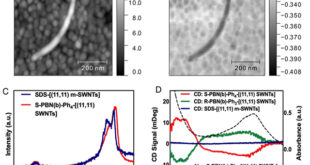Significance
Over the last decades, advanced and environmentally friendly catalytic methodologies have been developed in organic chemistry. Such advancements have been mainly based on rational or intuitional approaches and serendipitous findings. Generally, the need to improve the outcome of unexpected findings necessitates high-throughput experimentation that enables the analysis of several thousand reactions. Looking at previous studies in the field suggest that various innovative strategies have already been reported. Most of these techniques have distinct advantages but typically rely on expert knowledge, specialized laboratories or labelled substrates. To be applicable in standard chemical and biochemical laboratories, the necessary instrumentation should be sufficiently general and accessible. Recently, intriguing developments have brought substantially shortened analysis times for liquid chromatography by ultrahigh performance liquid chromatography and gas chromatography (GC) by flow field thermal gradient gas chromatography. Nonetheless, these techniques still suffer from long analysis times, preventing a high-throughput screening with several hundreds of samples a day. One way to circumvent this shortfall is via multiple injections in a single experimental run (MISER) approach.
The MISER approach does not necessitate special equipment or expert knowledge. This technique relies on the injection of several samples under isocratic conditions into one chromatographical run requiring baseline separation of the peaks. Unfortunately, this approach is yet to be employed for large sample numbers due to various challenges that ought to be addressed. In this regard, Leibniz Institute of Plant Biochemistry researchers: Anja Knorrscheidt, Pascal Püllmann, Eugen Schell, Dominik Homann, and led by Assistant Professor Martin Weissenborn, in collaboration with Dr. Erik Freier at the Leibniz Institute for Analytical Sciences developed a novel MISER-GC-MS technique that allow a substrate independent 96-well microtiter plate analysis within 60 minutes. Their original research work is currently published in the journal, ChemCatChem.
In their approach, a standard autosampler was modified for fast injection application by decoupling of the autosampler from the GC instrument. The read-out signal of the GC was suppressed, enabling an independent control of the autosampler. The method development commenced by altering various conditions at the autosampler. Overall, two methods were developed: one method for screening natural enzymatic reactions and the other being the stacked method with relevance to low activities and large amounts of side-products.
The authors reported that the MISER-GC-MS technique was broadened to measure several analytes combined with an internal standard to compensate deviations and enables the quantification of multiple molecules with overlapping peak areas eliminating the need for chromatographical separation. To facilitate the data evaluation, an R-script was written, allowing rapid analysis and quality control. In general, the developed technique enabled the screening of two libraries with different host organisms and reactions.
In summary, the study presented a new versatile MISER-GC-MS strategy paving the way for an adaptable, assay-independent platform for catalytic reactions. The developed system is applicable for any GC-MS equipped with an autosampler. Remarkably, this method can be applied to any laboratory equipped with a standard GC-MS. More so, with this concept, novel unspecific peroxygenase (UPO) chimeras, could be identified, consisting of subdomains from three different fungal UPO genes. In a statement to Advances in Engineering, Assistant Professor Martin Weissenborn explained the high sensitivity of MISER-GC-MS achieved in their study will enable the engineering of minute initial activities for novel unnatural reactions in the future.
Reference
Anja Knorrscheidt, Pascal Püllmann, Eugen Schell, Dominik Homann, Erik Freier, Martin J. Weissenborn. Identification of Novel Unspecific Peroxygenase Chimeras and Unusual YfeX Axial Heme Ligand by a Versatile High Throughput GC-MS Approach. ChemCatChem 2020; volume 12, page 4788 –4795.
 Advances in Engineering Advances in Engineering features breaking research judged by Advances in Engineering advisory team to be of key importance in the Engineering field. Papers are selected from over 10,000 published each week from most peer reviewed journals.
Advances in Engineering Advances in Engineering features breaking research judged by Advances in Engineering advisory team to be of key importance in the Engineering field. Papers are selected from over 10,000 published each week from most peer reviewed journals.

